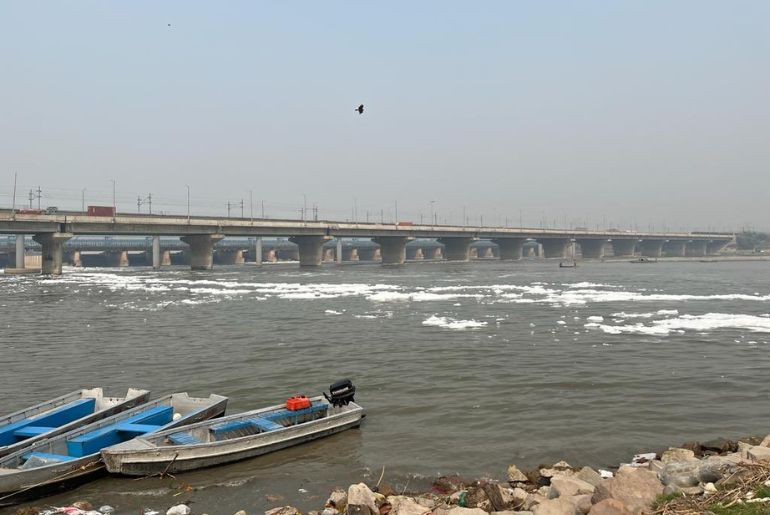River Yamuna, River Ganga’s second-largest tributary, is infamous for its pollution. Especially due to industrial waste and other waste. In fact, according to a Times Of India report, the release of untreated sewage water into River Yamuna has increased in the past year.
Release Of Untreated Sewage Water Into River Yamuna Has Increased

The Yamuna River was at its cleanest in July and it was a window of opportunity for the Delhi Pollution Control Committee to examine the pollution levels in the water. An RTI inquiry has revealed that although the city’s sewage generation increased by 10 per cent over the past approximately 1.5 years. Its sewage treatment capacity only increased by 5 per cent during the same time, causing untreated sewage to climb by 19 per cent.
According to Professor Shashank Shekhar, a geologist at Delhi University and a renowned expert on the river, ideally, the river’s water quality should be assessed every month, especially when there is ample flow in the river. The major drains and sewers that discharge their contents into the river experienced a reverse flow in July as a result of the river’s increased flow. This indicates that just silt was entering the Yamuna and that no pollution from cities was there. Testing would have given the river’s monsoon flow a baseline of information.
Also Read: From ITO To Yamuna Bazar, Rise In Yamuna River Water Level Floods Parts Of Delhi
He further stated that the baseline data can be used to understand the dilution process, the contribution of drains to pollution growth, and the sources of pollution other than drains and sewers by comparing monsoon and non-monsoon months. Unfortunately, the opportunity was missed.
Ideal Period For Evaluation Of River’s Quality
Condition of our holy river Yamuna near Signature Bridge Delhi. #yamunariver #varungulati @htTweets @TOIDelhi @DPCC_pollution @CPCB_OFFICIAL @LicypriyaK @GretaThunberg @ErikSolheim @ArvindKejriwal @CMODelhi @moefcc @PMOIndia @yamunajiye @dwnews @BrutIndia @BBCHindi @thewire_in pic.twitter.com/NJPYKso8qk
— Vikrant Tongad Environmentalist (@vikranttongad) March 31, 2021
The ideal period to evaluate the river’s water quality, according to Professor CR Babu, director of the Centre for Environmental Management of Degraded Ecosystems, may have been in July. According to him, without the impact of 22 drains dumping pollutants into it, the Yamuna was flowing in its peak natural state. Although there would undoubtedly be extra siltation, the total data would have provided a true representation of the river.
Meanwhile, an RTI request made by activist Amit Gupta reveals that the city’s sewage generation has doubled since last year, from 720 million gallons per day (MGD) in December 2021 to 792 MGD in July 2023. While sewage treatment has only increased by 5 per cent, from 515 MGD to 545 MGD.
Also Read: Not Snow But Toxic Foam Covers River Yamuna In Delhi
Due to this, the amount of untreated sewage entering and polluting the Yamuna increased by 19 per cent, from 200 MGD to 245 MGD.
Cover Image Courtesy: Erik Solheim/ Twitter
First Published: August 21, 2023 7:16 PM



